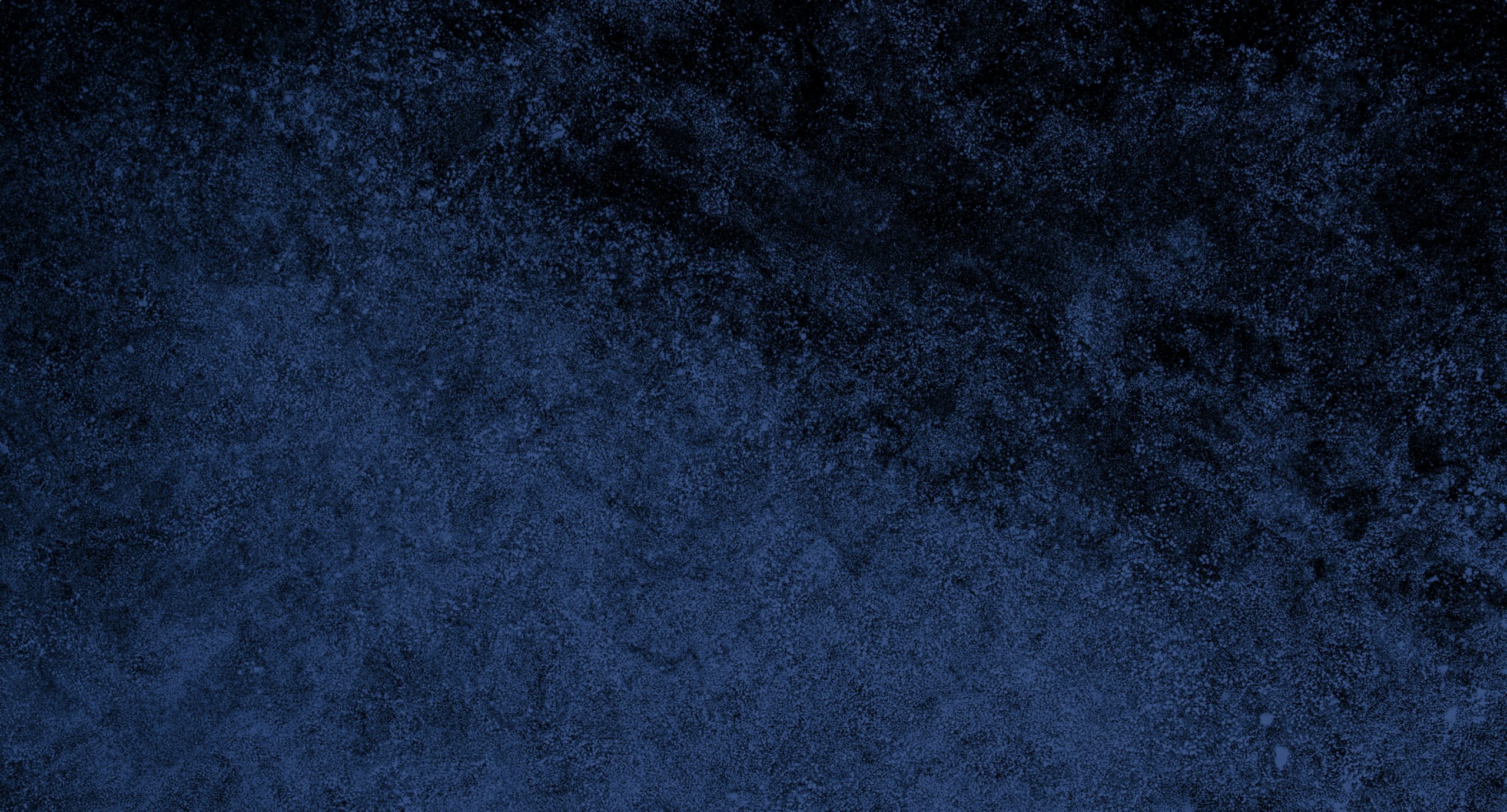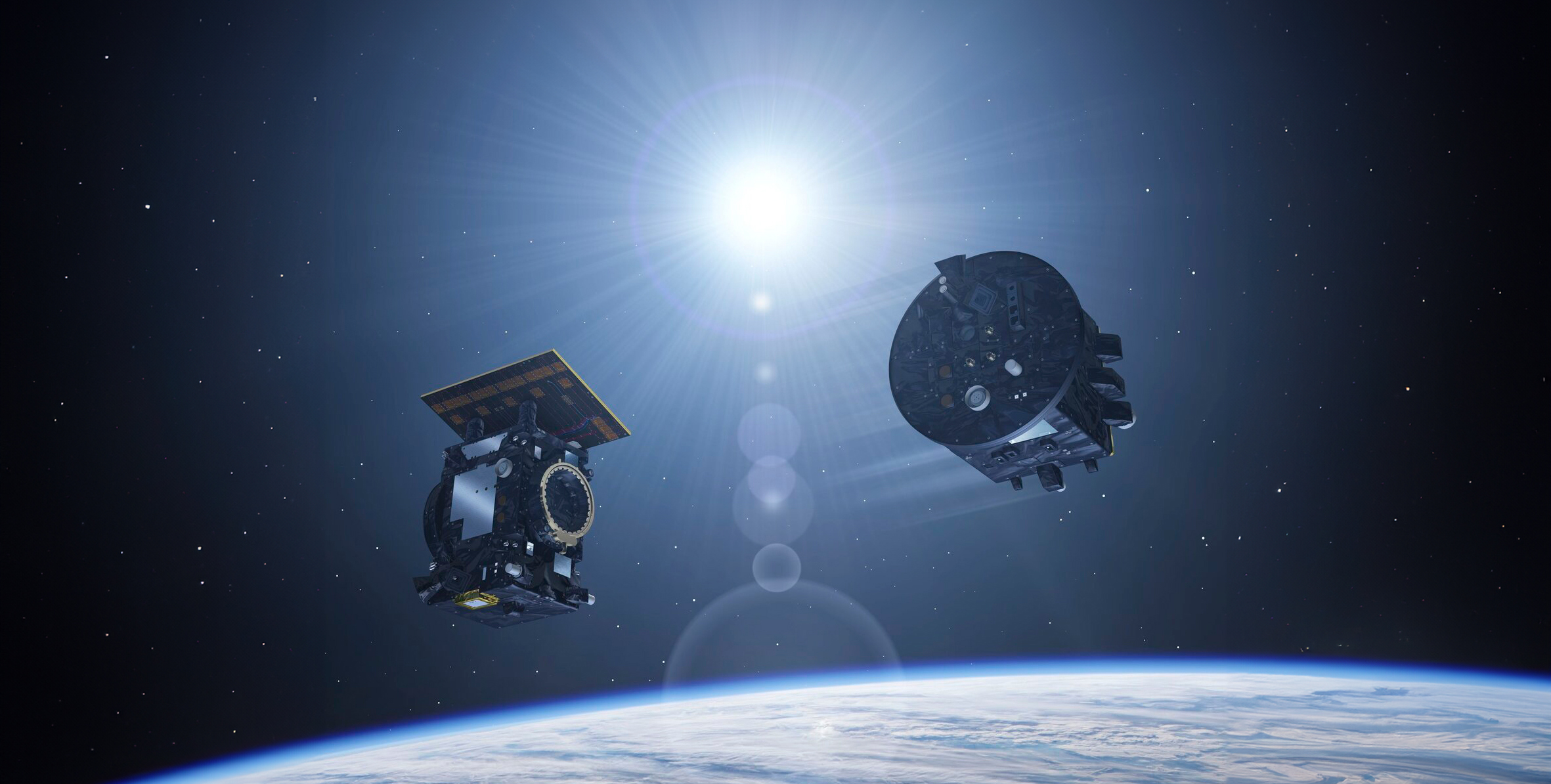
- Aerospace
Categories:
The solar corona is the Sun’s outermost layer. Composed of plasma and much less bright than the rest of the Sun, it is only visible during a solar eclipse. The fleeting and sporadic nature of these observation periods has made it a highly sought-after subject of scientific study, despite the complexity of the task. However, this challenge is no longer a barrier thanks to formation-flying technology in space, as demonstrated by the European Space Agency’s (ESA) Proba-3 mission.
Studying the solar corona helps us unravel fascinating mysteries, whose understanding in turn allows us to better comprehend phenomena occurring on Earth, such as communication interference caused by the solar wind – a stream of charged particles released from the corona. Why is it hotter than the solar surface? What is the origin and structure of its magnetic field? What drives the solar wind, and why does it accelerate in the way it does? These are just some of the questions that a deeper understanding of the corona could help to answer.
Proba-3, with Sener as the main contractor, has achieved a milestone in solar observation history by creating an artificial solar eclipse lasting several hours and, during this time, capturing images of the inner solar corona (the hottest and most mysterious region of our star) with a resolution and stability previously only achievable during the brief minutes of total solar eclipses on Earth. Using the ASPIICS coronagraph, and over the mission’s estimated two-year lifespan, scientists now have access to on-demand observations lasting up to six continuous hours.
To create the artificial eclipses that make these images possible, the mission’s satellites must position themselves and maintain 150 metres apart with millimetre precision (less than the thickness of a fingernail) for several hours while orbiting at over 2 km/s. It is a true technical feat that enables the blocking of the solar disc and, therefore, the study of the inner corona without atmospheric interference, with greater frequency and duration than is possible from Earth. Proba-3 has demonstrated not only that precision and autonomous formation flying between satellites is possible, but that it enables results unattainable by any other current technology.
In this article, we take a closer look at the first images obtained from this fascinating mission.
Red-hot iron atoms, fiery threads, and “cold” plasma: what the images reveal
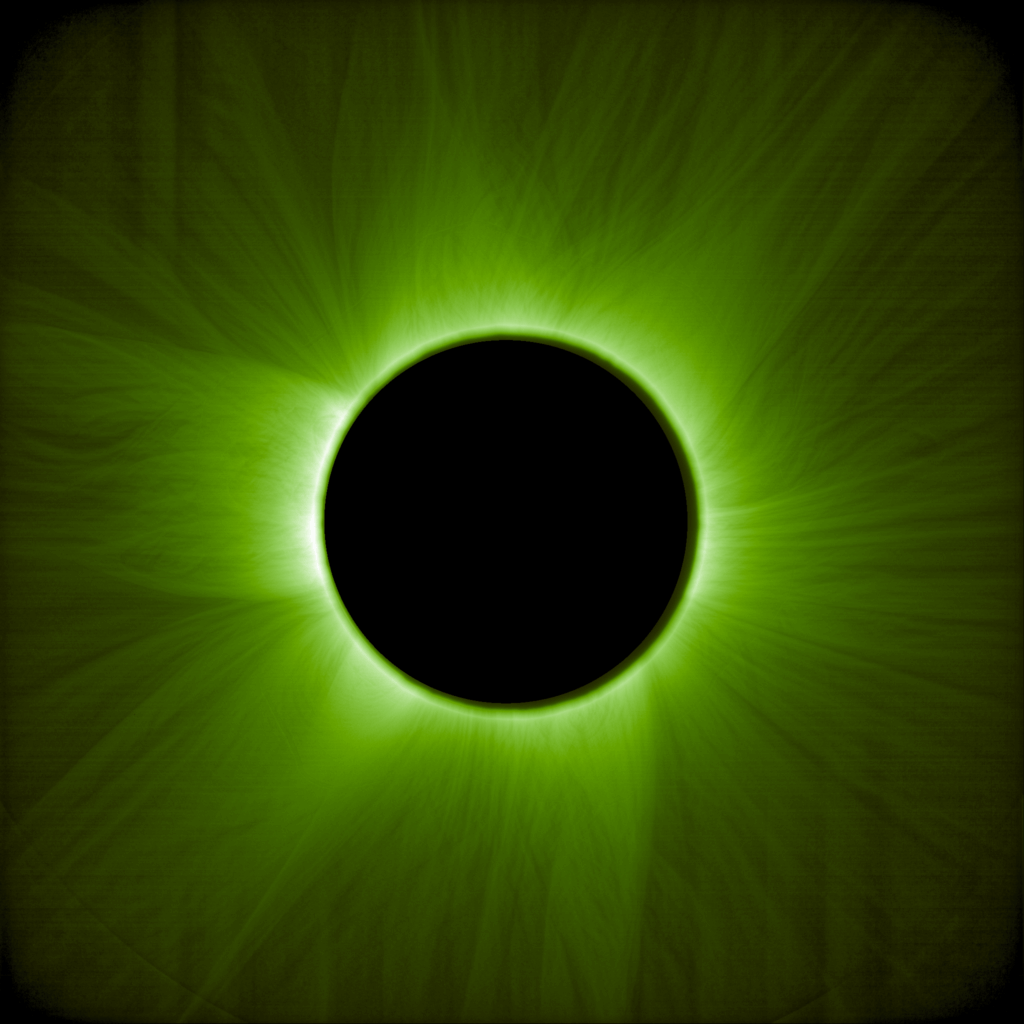
In this image, the Sun’s inner corona appears tinted green, simulating what the human eye might see during an eclipse using a green filter. The delicate structures resembling strands of hair were revealed through an advanced image-processing algorithm, allowing us to observe the complex dynamics of solar plasma in an extremely difficult-to-study region in great detail.

In this artificially dark green-coloured image, ASPIICS captured the corona in a spectral line associated with iron (Fe), whose atoms have lost several electrons due to temperatures reaching 2 million degrees Celsius. This line, known as the “coronal green line”, helps identify the hottest areas of the corona. In the upper left corner, a plasma loop rises from the solar surface – a structure associated with recent solar eruptions.
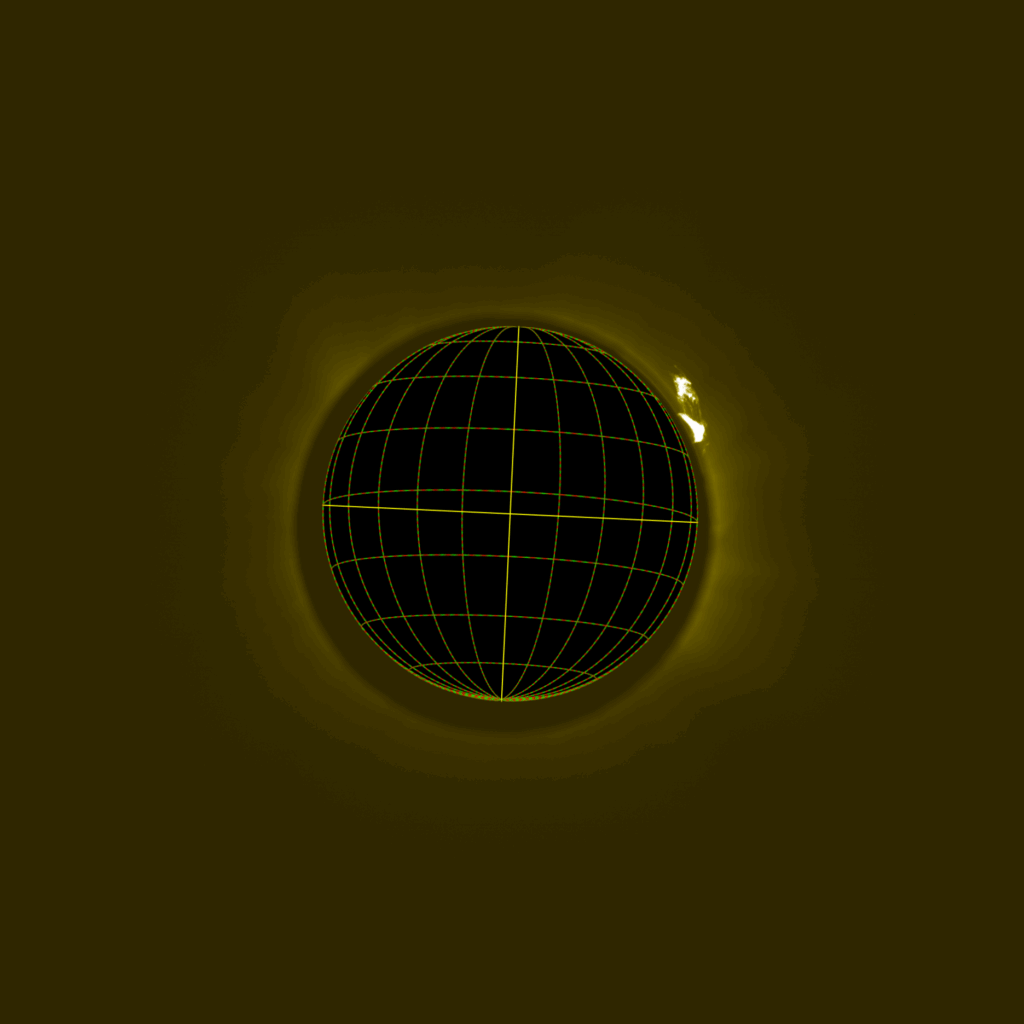
This yellow-tinted image shows the solar corona observed in a spectral line emitted by helium (He) atoms. The white grid indicates the actual position of the Sun, slightly shifted behind the coronagraph disc. Despite the instrument’s intentional off-centring, ASPIICS managed to capture a solar prominence, visible in the upper right corner of the image: a cloud of relatively cool plasma that, although reaching temperatures of around 10,000 degrees Celsius, is significantly cooler than its surroundings (around one million degrees), creating an impressive contrast. It is worth noting that the corona is around two hundred times hotter than the Sun’s surface, so capturing a prominence in this level of detail in one of the first images is excellent news and a testament to the mission’s capabilities.
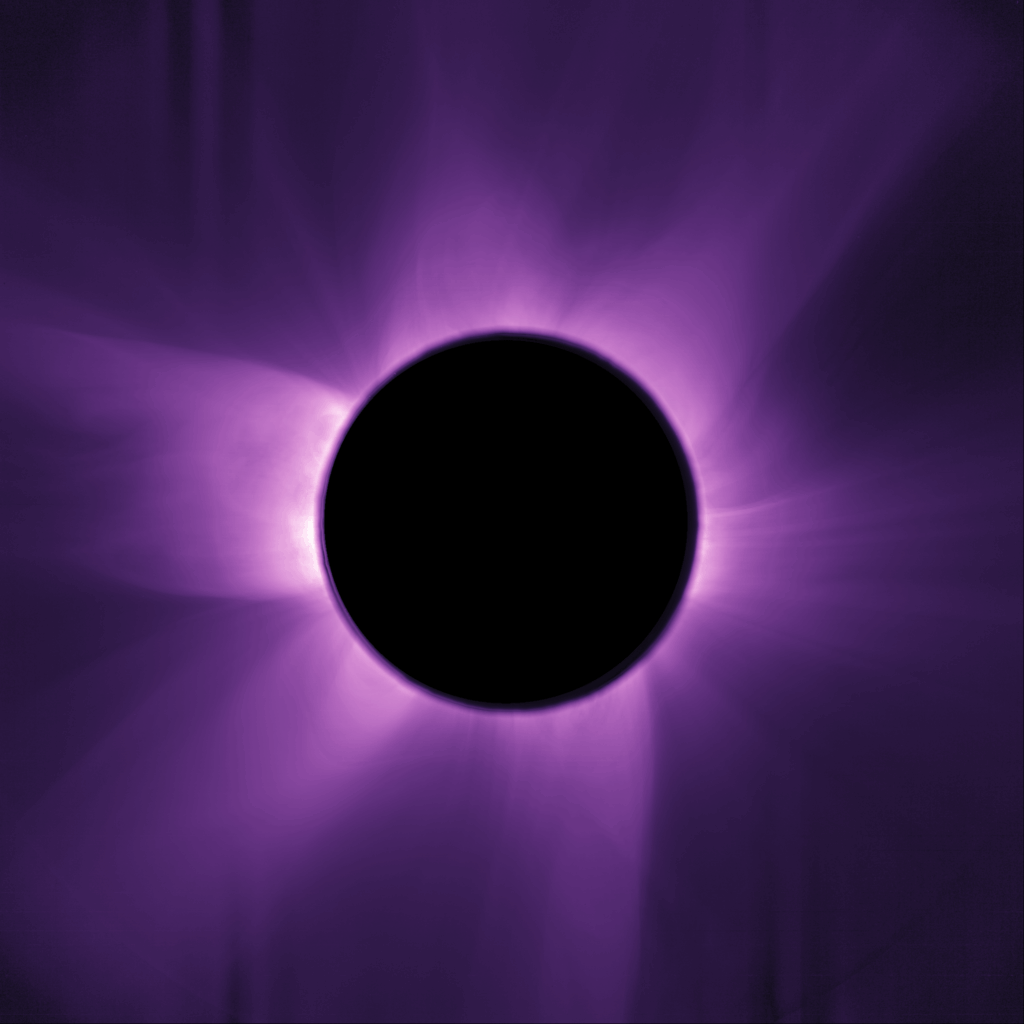
Coloured in violet, this image was obtained using a technique that distinguishes polarised light emitted by the solar corona from light scattered by dust in the solar system. This separation is crucial for understanding the physical structure and dynamics of the coronal plasma without external interference.
One image, three missions
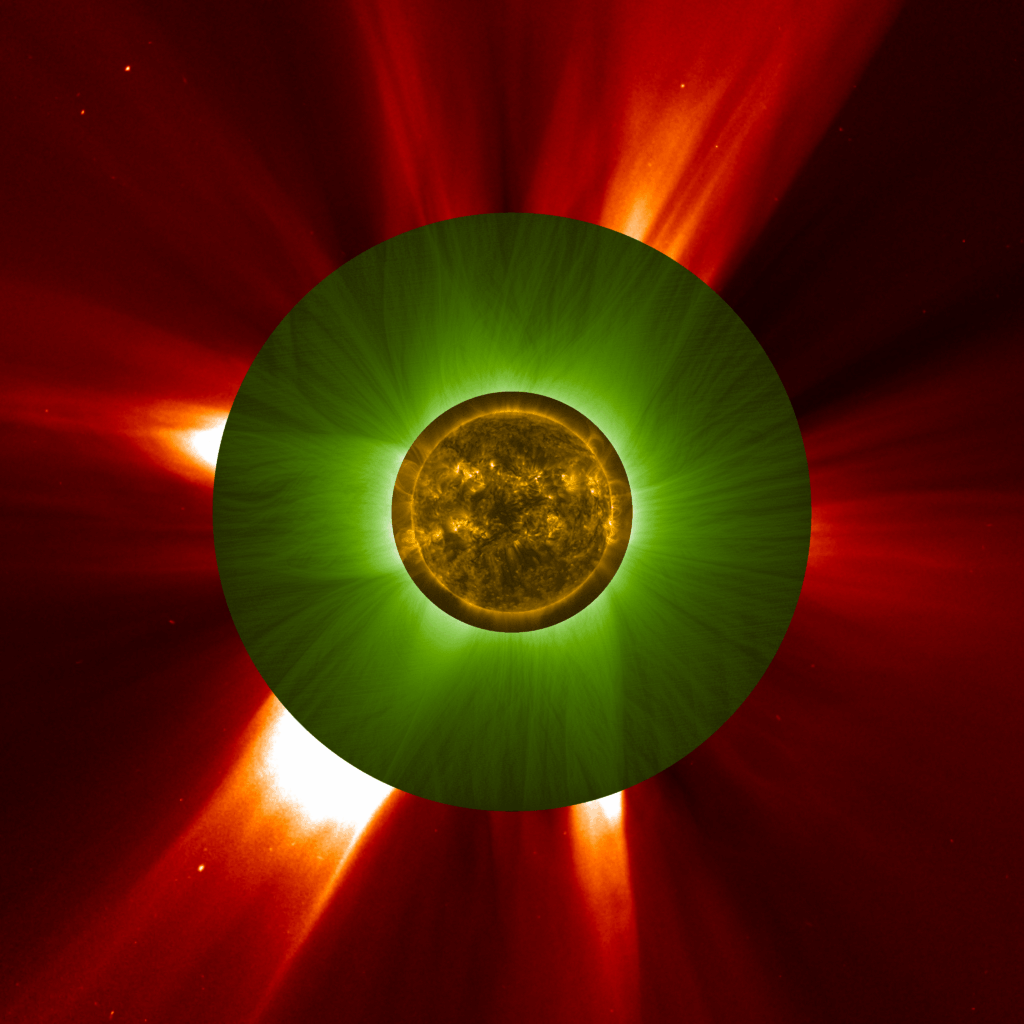
This image combines observations from three European instruments aboard different missions:
- The solar disc in yellow, captured in extreme ultraviolet by the SWAP telescope aboard Proba-2.
- The outer corona in red, observed by the LASCO C2 coronagraph on the SOHO mission.
- And the inner corona in green, recorded in detail by ASPIICS aboard Proba-3.
Thanks to this collaboration, we can observe the complete solar environment — from its surface to its farthest reaches — in a single, coherent image, rich in scientific value.
The success of these observations would not have been possible without Proba-3’s groundbreaking formation-flying technology. As the mission’s main contractor, Sener has helped strengthen Europe’s role in space exploration. Proba-3 brings us, with unprecedented precision, closer to unravelling the mysteries of the solar corona.
Images © ESA / NASA / Proba-2 / Proba-3 / SOHO / SWAP / ASPIICS / LASCO C2 / WOW algorithm / ASPIICS.
- Proba-3
Tags:
Sergio Tiraplegui
Aeronautical engineer specializing in aircraft design. Sergio holds a master's degree in autonomous vehicle dynamics and control and applied systems engineering. He has 10 years of experience in the space sector, developing activities ranging from the specification and implementation of high-precision simulators to the analysis and detailed design of complex architectures, specification and verification of embedded software, including the Fault Detection, Identification, and Recovery (FDIR) system, and, most recently, as a systems engineer during the commissioning and operations of Proba-3.
